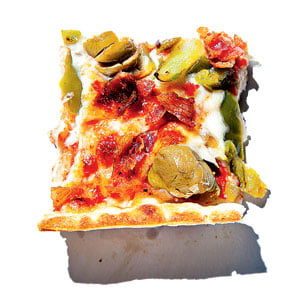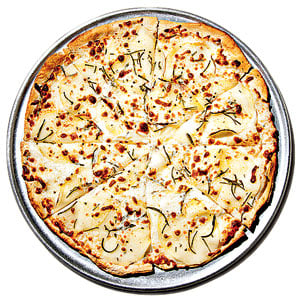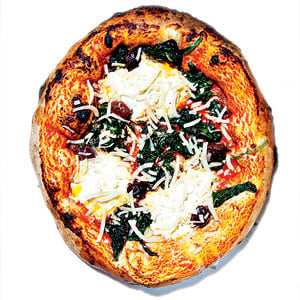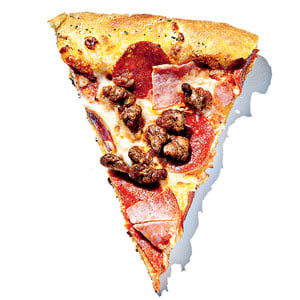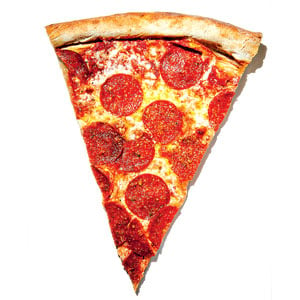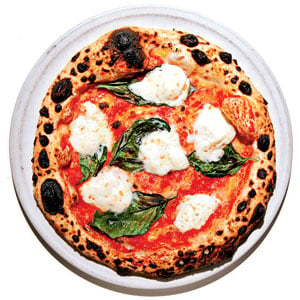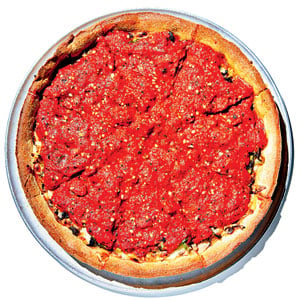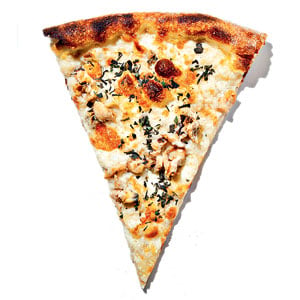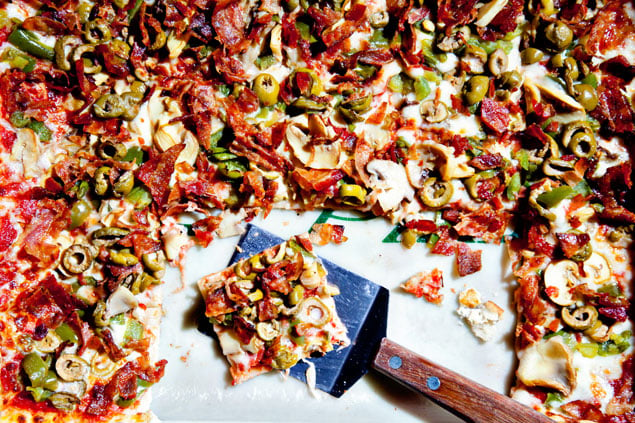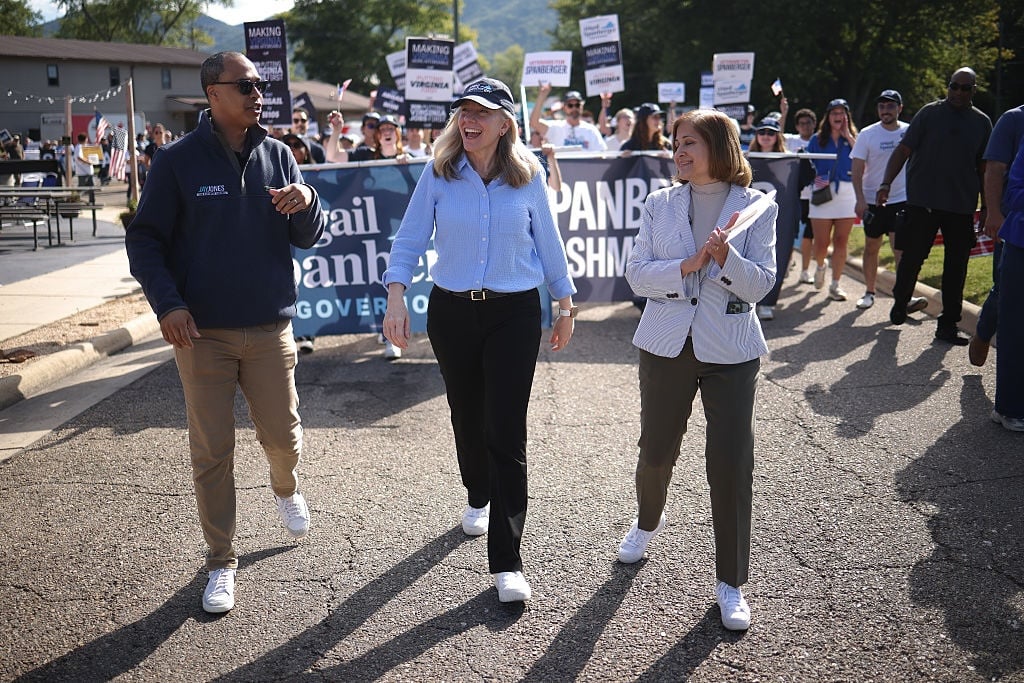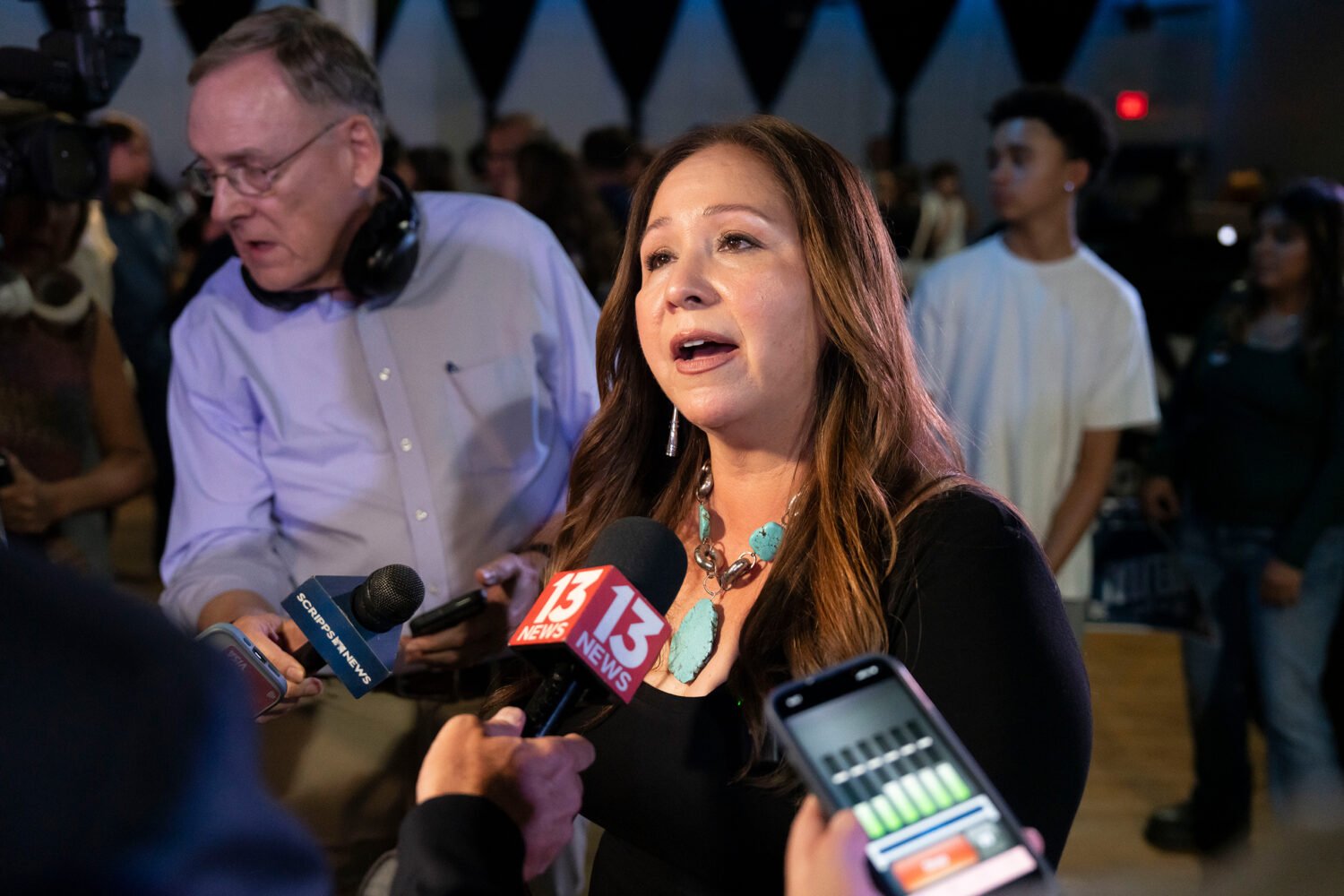|
Maryland
What defines the style: Rectangular pies, a
biscuity crust, sweet tomato sauce, smoked provolone. Where to get
it: The Original Ledo Restaurant in College Park.
Restaurant that epitomizes it: The Original Ledo.
Fun fact: The shape was born of necessity: Legend has it
that when the Ledo was set to open in 1955, the only pans it could find
for its medium and large pizzas were metal cafeteria trays.
Definitive pies: Mushrooms, peppers, and green olive;
bacon.
|
Roman
What defines the style: Very thin,
cracker-like crust. Where to get it: Da Marco in Silver
Spring. Restaurant that epitomizes it: Da Remo in Rome.
Fun fact: The original thin-crust Roman pizza was topped
with honey and bay leaves. Today Roman-style turns up toppings seldom
found on most pies—figs, potatoes, eggs. Definitive pie:
Patate, with sliced potatoes, mozzarella, and rosemary.
|
|
“Gourmet” Wood-Fired
What defines the style: Darkened, slightly
smoky perimeter, thin crust, “gourmet” toppings like shrimp or pesto.
Where to get it: Comet Ping Pong in upper Northwest DC.
Restaurant that epitomizes it: Spago in LA. Fun
fact: Wolfgang Puck changed pizza forever when he served a
smoked-salmon-and-crème-fraîche pie at Spago, setting a precedent for all
manner of experimentation, delicious and not. Definitive pie:
Shiitake mushroom, feta, roasted red pepper, and kalamata
olive.
|
Generic Boxed
What defines the style: A doughy crust laden
with sweet tomato sauce and lots of packaged, pre-grated mozzarella.
Where to get it: Domino’s. Restaurant that
epitomizes it: Pizza Hut. Fun fact: The best way
to reheat boxed pizza? Forget the microwave or oven. Cut the pie into
slices and warm each for two minutes over a low-medium flame in a 12-inch
skillet. Definitive pie: Sausage, ham, and
pepperoni.
|
|
New York
What defines the style: Thin crust with zesty
sauce and a blanket of mozzarella. Where to get it: The
Italian Store in Arlington. Restaurants that epitomize it:
Lombardi’s Pizza and John’s Pizza in Manhattan. Fun
fact: The pizza gets its blackened edges from being fired in a
coal oven at 900 degrees. The heat cooks pies in 1½ to three minutes, but
the crispness of slices comes from reheating; essentially, they’re given a
second cooking. Definitive pie: Pepperoni.
|
Neapolitan
What defines the style: Thin crust with a
puffy, slightly blackened perimeter. Toppings are applied sparingly atop
crushed-tomato sauce and buffalo mozzarella. Served uncut. Where
to get it: 2 Amys in DC. Restaurant that epitomizes it:
Brandi in Naples, putative creator of the Margherita pie.
Fun fact: Only pizzas designated Denominazione di Origine
Controllata, indicating they meet strict specifications for ingredients
and preparation, can truly be called Neapolitan. Definitive
pie: Margherita.
|
|
Chicago
What defines the style: A rich, thick, gooey
pie cooked in a bowl-like dish with gobs of mozzarella and chunky tomato
sauce. Eat it with a knife and fork. Where to get it:
District of Pi in DC’s Penn Quarter. Restaurant that
epitomizes it: Lou Malnati’s in Chicago. Fun fact:
Pizzas are constructed in reverse order: Cheese goes down first,
followed by toppings, then sauce. Definitive pie:
Pepperoni, sausage, onions, and peppers.
|
New Haven
What defines the style: Charred, thin crust
with marinara sauce and a dusting of grated pecorino. Pies often have an
oily surface. Where to get it: Pete’s New Haven Style
Apizza in DC’s Columbia Heights and Friendship Heights and in Arlington’s
Clarendon. Restaurant that epitomizes it: Pepe’s in New
Haven. Fun fact: If you want mozzarella—or “mootz”—you
have to order it as a topping. Definitive pie: White clam
and garlic.
|
